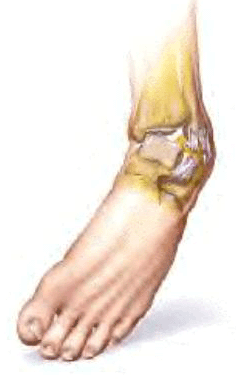Sprains and Strains - symptoms and treatment

What is Sprains and Strains
Sprains and Strains are Acute, traumatic injury to muscles, tendons, and ligaments, typically as a consequence of rapid and unexpected stretching such as may occur with a stumble, sudden twisting movement, or fall. A sprain is an injury to a LIGAMENT; ligaments connect bones to each other. A strain is an injury to a MUSCLE or TENDON; tendons extend from muscles to connect them to bones. Sprains and strains nearly always occur in or near joints. A muscle, tendon, or ligament may rupture (tear completely) under the force of a sudden stretch. Though immediate treatment RICE (rest, ice, compression, elevation)—remains the same, a rupture may later require surgical repair.
A severe strain or sprain often is difficult to distinguish from a FRACTURE and should be treated as a fracture until medical assessment determines it is not.
Symptoms of Sprains and Strains and Diagnostic Path
The main symptoms of a sprain or strain are PAIN and swelling following a sudden movement that involves a JOINT. Both are often immediate, and it may be difficult to use the limb. Grade 1 sprains and strains are painful but minor and do not necessarily require a visit to the doctor. However, it is not possible to look at an injury and know whether there is a FRACTURE. A doctor should evaluate any injury in which
- it is difficult to bear weight or use the arm or hand
- there is numbness or tingling beyond the point of the injury (in the foot with an ankle injury, for example)
- pain is severe though the injury looks minor
Grade 2 injuries seldom require diagnostic imaging, though the doctor may request X-RAY, COMPUTED TOMOGRAPHY (CT) SCAN, OR MAGNETIC RESONANCE IMAGING (MRI) when there is doubt as to the severity of the injury because this can affect the treatment approach. Doctors assign a grade value to a sprain or strain to identify its severity, with grade 1 the least and grade 4 the most severe. ARTHROSCOPY may be necessary to accurately distinguish a grade 3 from a grade 4 injury.
| Grade of Sprain/Strain | Severity of Injury |
|---|---|
| grade 1 | stretching and minor tearing of fibers but structure remains intact |
| grade 2 | partial tear of the structure and some instability of the JOINT |
| grade 3 | significant tear of the structure and major instability of the joint |
| grade 4 | complete tear of the structure and inability to use the joint |
Sprains and Strains - Treatment Options and Outlook
Grade 1 and grade 2 sprains and strains heal in two to six weeks with conservative treatment that includes continued RICE: rest, ice (or heat, after 48 hours, if heat feels better than ice), compression (elastic wrap, soft splint, tape, or brace), and elevation of the injured body part. Some grade 3 and nearly all grade 4 sprains and strains require surgery to repair the damage and reconstruct the tissues. The doctor can do this repair during diagnostic arthroscopy or with arthroscopic surgery after confirming the diagnosis through other means. Recovery after surgery may take up to six months, depending on the location and severity of the injury.
Sprains and Strains - Risk Factors and Preventive Measures
Though sprains and strains are often ATHLETIC INJURIES, they can occur during everyday activities such as walking or lifting as well as in MOTOR VEHICLE ACCIDENTS. Proper technique for sports, including WARM-UP, and for lifting can prevent many soft tissue injuries. Taping or bracing vulnerable joints such as ankles, knees, and wrists provides additional support.
See also ACCIDENTAL INJURIES; ANKLE INJURIES; HIP FRACTURE IN OLDER ADULTS; KNEE INJURIES; SURGERY BENEFIT AND RISK ASSESSMENT; WEAK ANKLES.
Open discussion on the topic Sprains and Strains - symptoms and treatment
Similar interests
- Nuovi Casino
- Casinos Not On Gamstop
- UK Casinos Not On Gamstop
- Casinos Not On Gamstop
- UK Casinos Not On Gamstop
- Casino Non Aams Italia
- Slot Sites Not On Gamstop
- Meilleur Casino En Ligne
- Non Gamstop Casino Sites UK
- Meilleur Casino En Ligne
- Casino En Ligne France
- Best Non Gamstop Casinos
- Casinos Not On Gamstop
- UK Casino Not On Gamstop
- Casinos Not Signed Up To Gamstop
- Best Slot Sites UK
- Non Gamstop Casino Sites UK
- Online Casinos Nederland
- Online Casinos Nederland
- Casinos Not On Gamstop
- Best New Uk Casinos Not On Gamstop
- Casino Non Aams
- Non Gamstop Casinos UK